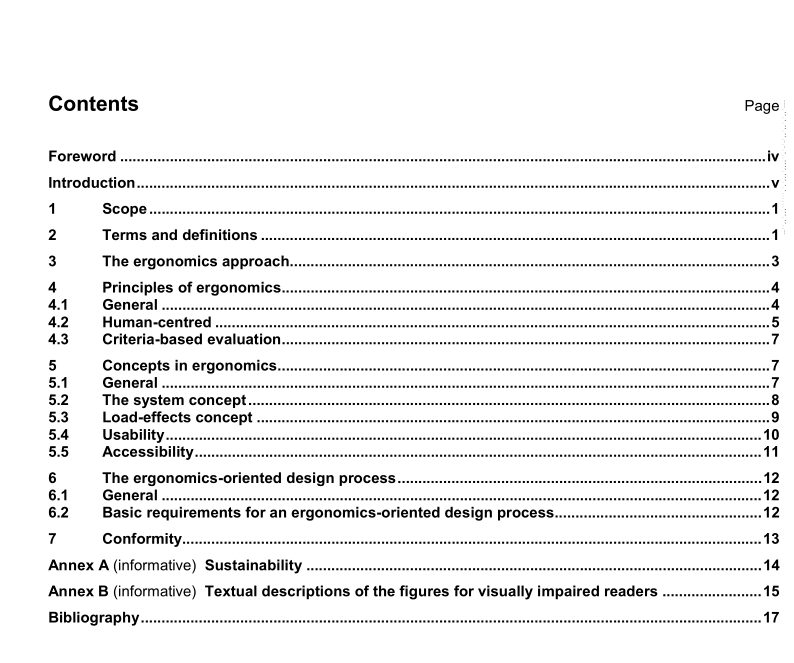ISO 26800 pdf download

ISO 26800 pdf download Ergonomics — General approach, principles and concepts
This lnternational Standard presents the general ergonomics approach and specifies basic ergonomicsprinciples and concepts. These are applicable to the design and evaluation of tasks, jobs, products, tools.equipment, systems, organizations, services, facilities and environments, in order to make them compatiblewith the characteristics, the needs and values, and the abilities and limitations of people.
The provisions and guidance given by this lnternational Standard are intended to improve the safetyperformance, effectiveness,efficiency, reliability, availability and maintainability of the desian outcomethroughout its life cycle, while safeguarding and enhancing the health, wel-being and satisfaction of thoseinvolved or affected.
The intended users of this lnternational Standard are designers, ergonomists and project managers, as welas managers, workers, consumers (or their representatives) and procurers. lt also serves as a referencestandard for standards developers dealing with ergonomics aspects
This lnternational Standard provides the basis for other, more detailed, context-specific ergonomicsInternational Standards.
2 Terms and definitions
For the purposes of this document, the following terms and definitions apply.
2.1
accessibility
extent to which products, systems, services, environments and facilities can be used by people from apopulation with the widest range of characteristics and capabilities to achieve a specified goal in a specifiedcontext of use
NOTE 1Context of use includes direct use or use supported by assistive technologies
NOTE 2Adapted from ISO/TR 22411:2008,definition 3.6
2.2
ergonomics
human factors
scientific discipline concerned with the understanding of interactions among human and other elements of asystem, and the profession that applies theory, principles, data and methods to design in order to optimizehuman well-being and overall system performance
NOTEThis definition is consistent with that given by the lnternational Ergonomics Associationl21].
2.3
environment
physical, chemical, biological, organizational, socal and cultural factors surrounding one or more persons
2.4
external load
external conditions and demands in a system which influence a person’s physical and/or mental internal load
NOTE 1 In ISO 6385:2004, “external load” is called “work stress”.
NOTE 2 External load is a neutral term. Its effects can be positive, neutral or negative.
2.5
fatigue
impairing non-pathological manifestation of internal load, completely reversible with rest
NOTE Fatigue can be mental, physical, local and/or general.
2.6
internal load
internal response of a person to being exposed to the external load, depending on his/her individual characteristics (e.g. body size, age, capacities, abilities, skills, etc.)
NOTE 1 In ISO 6385:2004, “internal load” is called “work strain”.
NOTE 2 Internal load is a neutral term. Its effects can be positive, neutral or negative.
2.7
system
combination of interacting elements organized to achieve one or more stated purposes
NOTE 1 In ergonomics, the “elements” of a system are often called “components”.
NOTE 2 A system can consist of products, equipment, services and people.
NOTE 3 The word “system” can be qualified by adding a context-dependent term (e.g. aircraft system).
NOTE 4 Adapted from ISO/IEC 15288:2008, definition 4.31.









